In 2002, Martin Mazorra, adjunct associate professor (CCE), and former faculty member Dennis McNett, MFA Fine Arts (Printmaking) ’04, discovered something that changed their lives: printmaking with a steamroller. In a warehouse district in New Orleans, they watched as the construction vehicle turned 17 sheets of woodblocks into a mural honoring the life and music of Louis Armstrong. “We were like, ‘Okay! So this is possible,’” says Mazorra.
A few years later, in 2006, they brought this sweeping technique to Pratt with Big Damn Prints, an annual daylong celebration of large-scale printmaking. This yearly event brings Pratt students and faculty together to transform the heart of campus into a hub for collaborative artistry, where a visiting steamroller is employed to press woodblocks too large for traditional printmaking machinery.
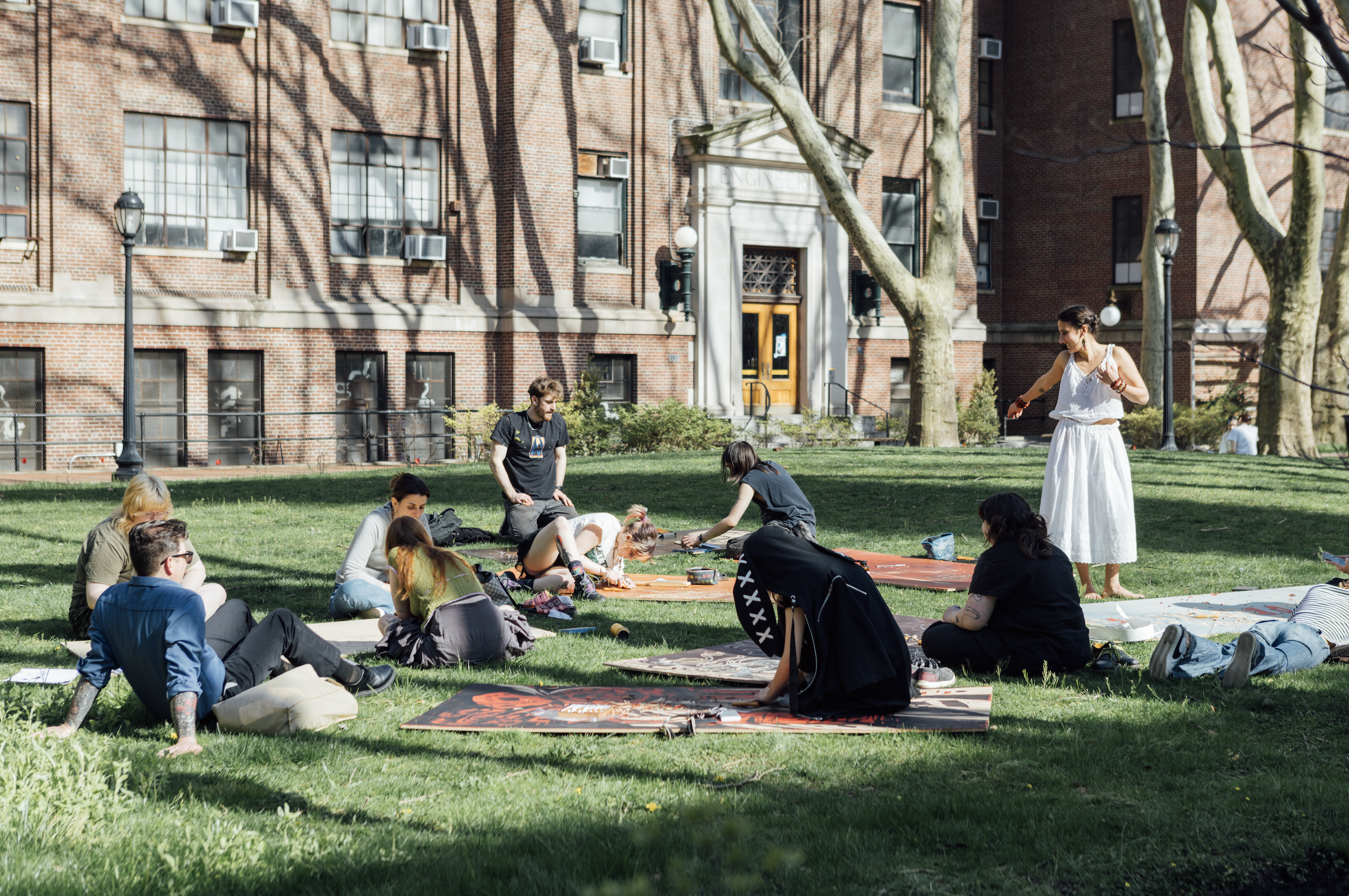
Each year, students work in small groups to collectively sketch and carve intricate designs, ink the woodblock surfaces, and stretch fabric to prepare for printmaking. Between the four people necessary to move a block, another five to lay down muslin, and many others busily inking, the process takes on a certain amount of teamwork, part of what sparked Mazzora’s interest originally. “It’s metaphorical in that this project is physically bigger than you are, and your community is bigger than you are,” says Mazorra. “So while you operate as an individual inside this project, you operate as part of the collective working towards this goal for everybody.”
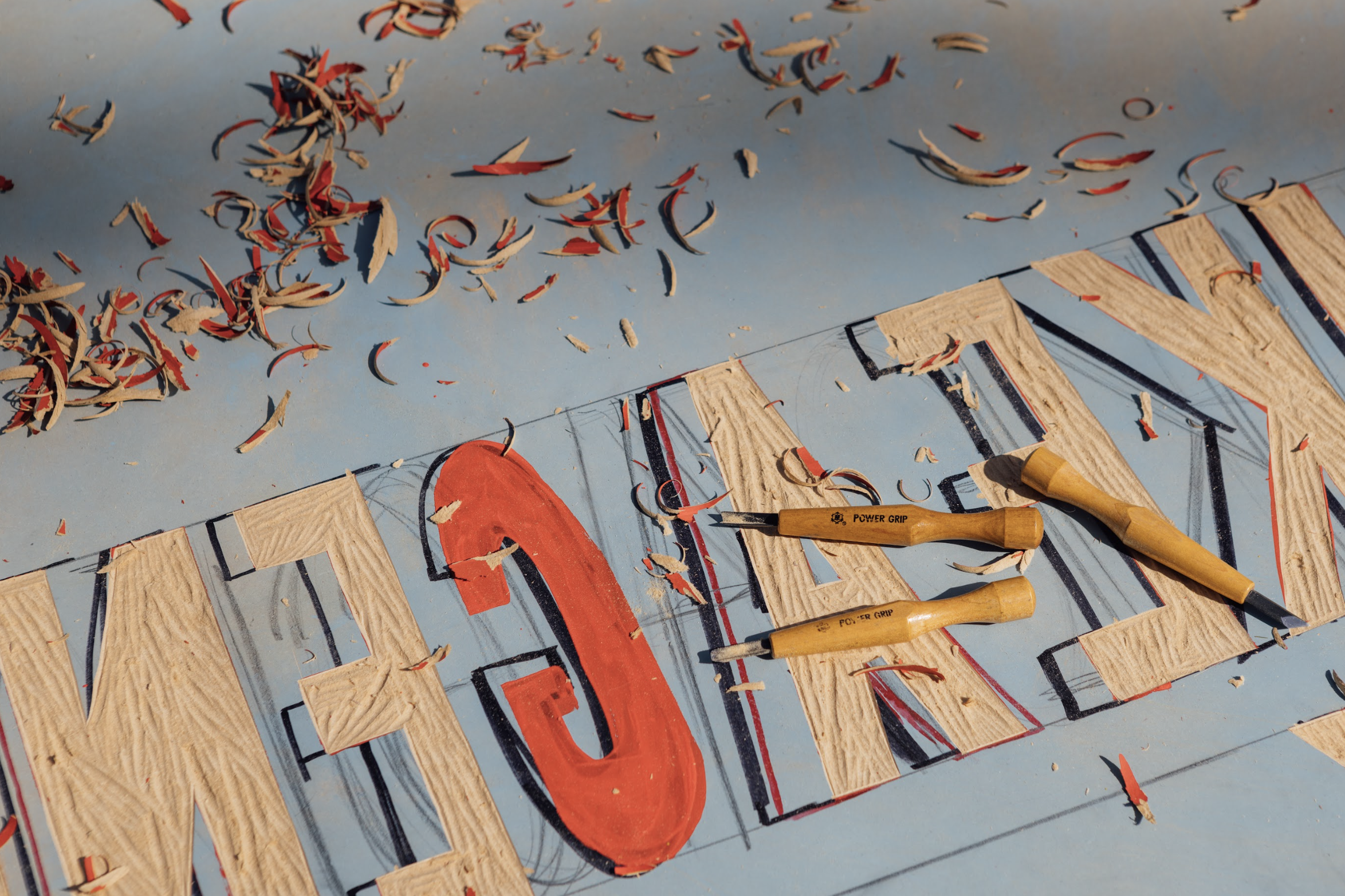
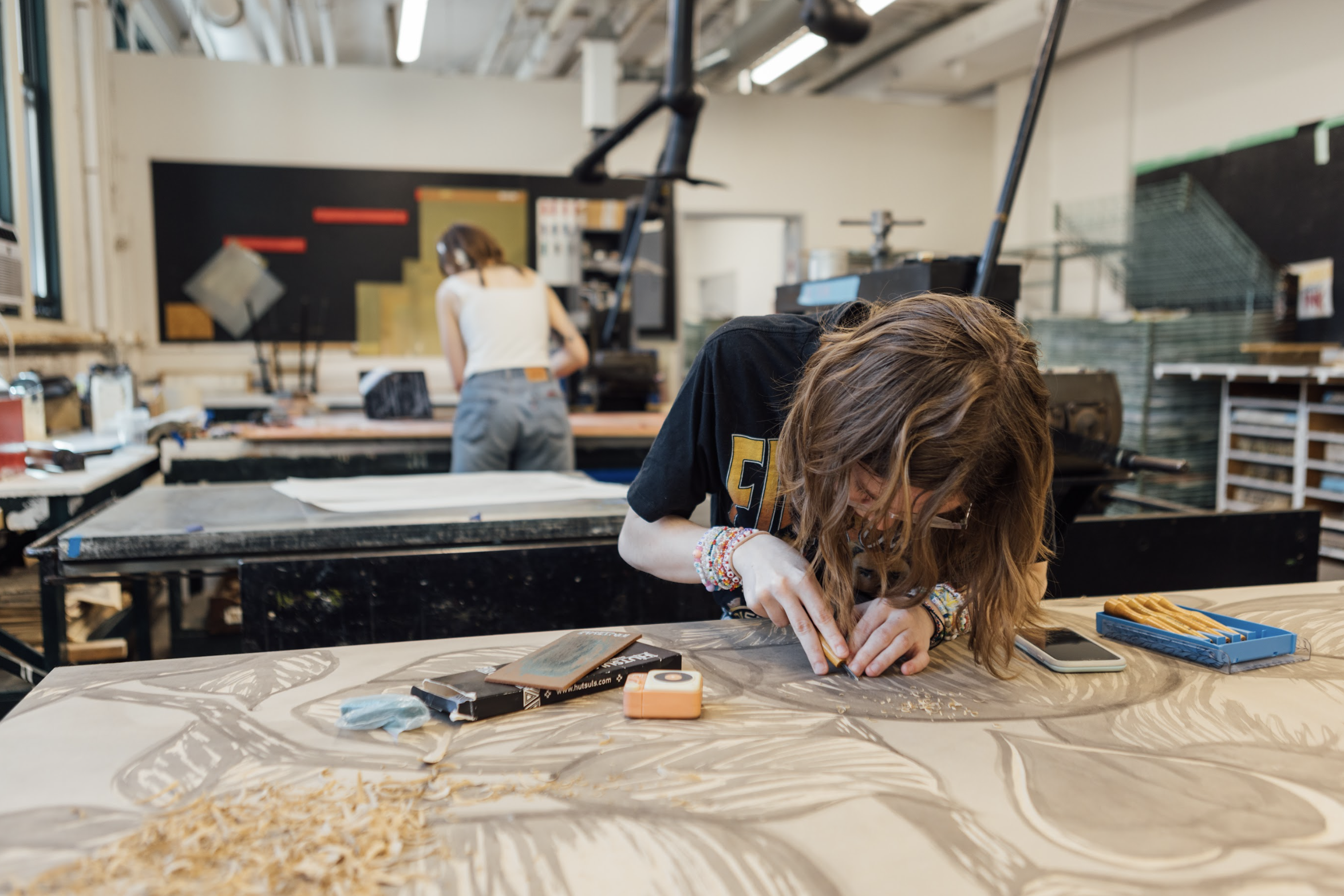
As longtime faculty will attest, every Big Damn Prints is a little different. According to Caitlin Riordan, printmaking technician and visiting instructor of fine art, previous iterations of the tradition have included popsicle stands and live music.
This year marked the first time participation in Big Damn Prints has been required for all junior printmaking majors, allowing them to scale up their printmaking practice. “They have never had the opportunity to make anything this size,” says Riordan. She also noticed that the new class allows students to “create more detailed drawings on the boards” and receive more hands-on feedback throughout the semester.
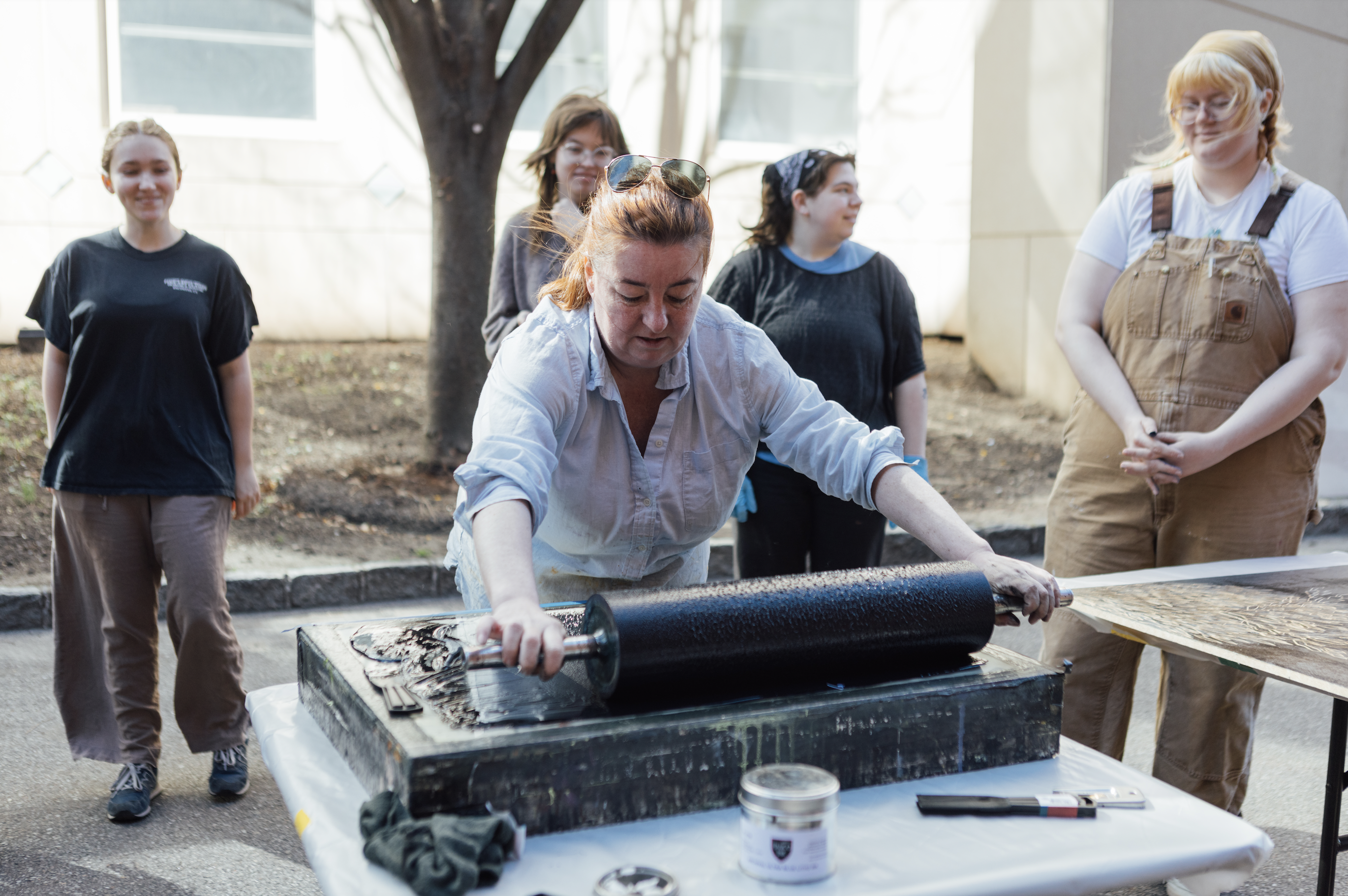
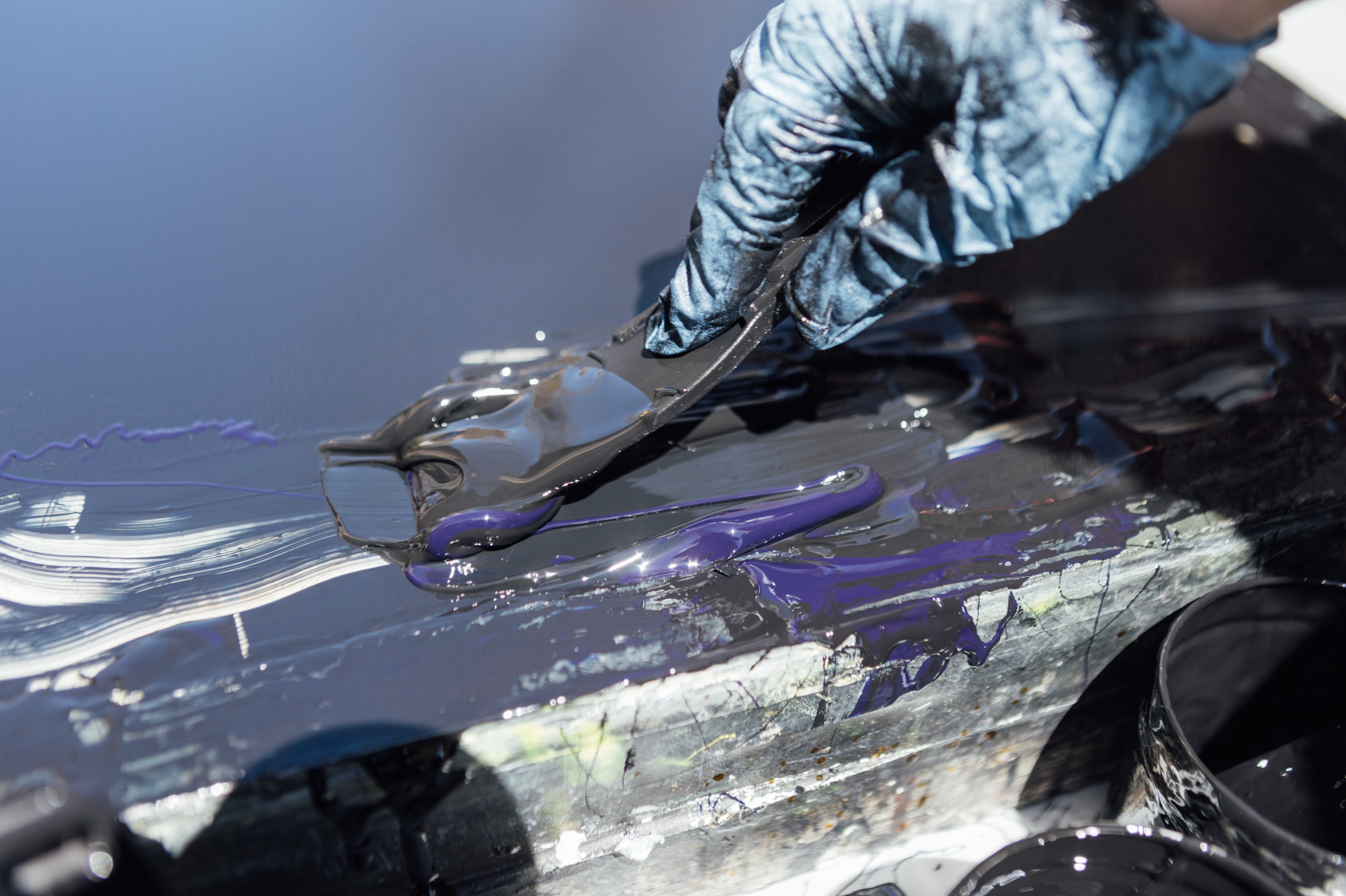
For Renn’e Orellana, BFA Fine Arts (Printmaking) ’25, feedback became a crucial aspect of their creative process. In Orellana’s words, they “wanted to do something totally different” before a peer suggested they print a life-size image of a person. But with only one opportunity to produce the print with a steamroller, they saw this limitation and the piece itself as a “challenge posed to you. You have to dominate the beast and try to make it your own.”
“I like to do political and social commentary, and I think that printmaking, for me, is the best way that I can do that because I can repeat my work over and over again, without it being just a repetition, but rather a piece of artwork in itself,” says Orellana. “For Big Damn Prints, we’re just going to have one or two prints. This print is not going to be repeatable, so it’s really important to be able to nail it down at the moment.”
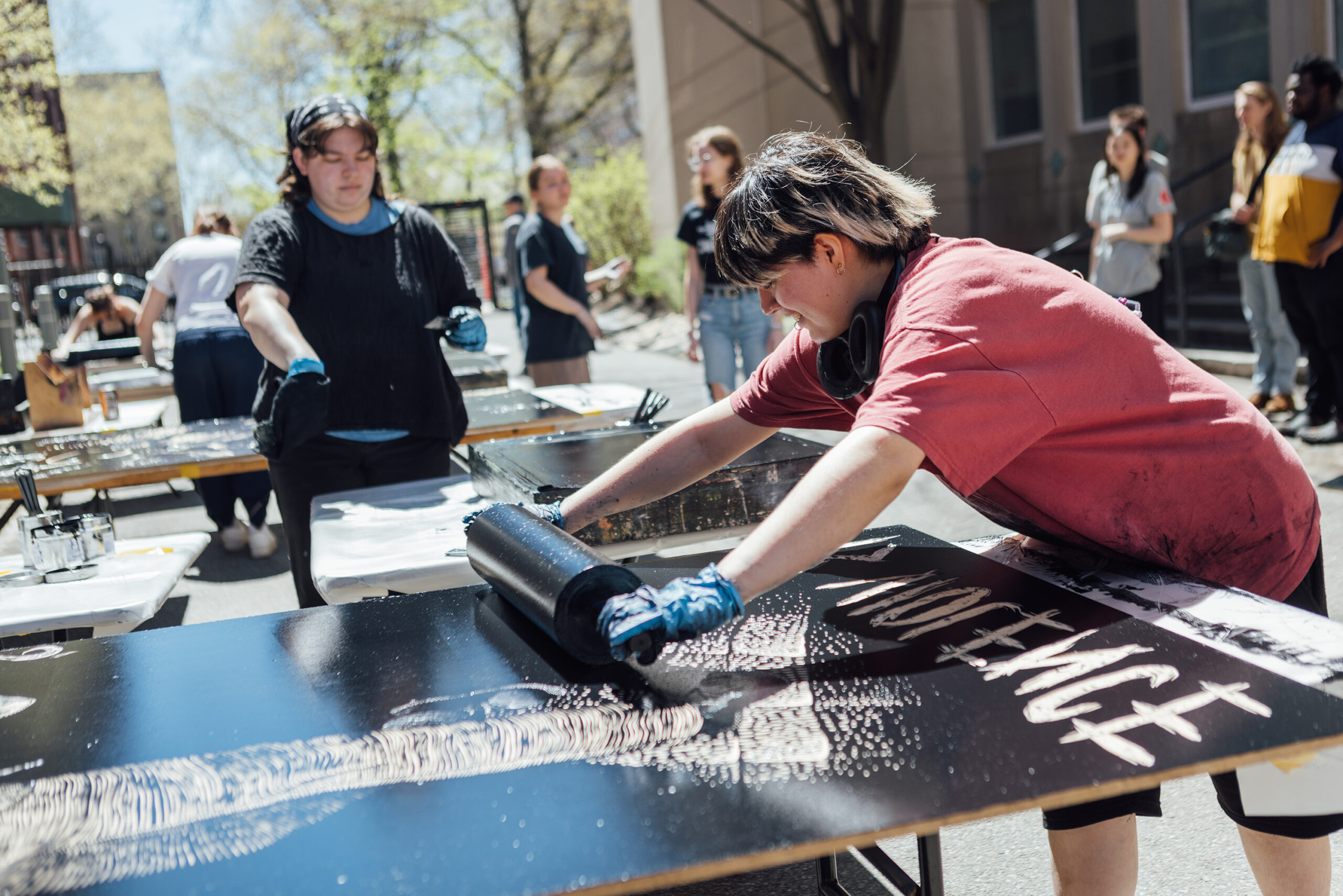
For other students, like Uriah Weaver, BFA Fine Arts (Printmaking) ’25, an event like Big Damn Prints is a perfect complement to their existing practice. “I like working big, personally,” says Weaver. “I think it makes it more significant.”
Typically influenced by the likes of Gustave Doré and other baroque woodcarvers, Weaver used Big Damn Prints to explore his medium in a fresh context. Throughout the process, he learned a new way of approaching his work, taking an improvisatory path to creating his print. “It’s coming to me as I’m working,” says Weaver. “And that’s not something I’m used to. Every time you carve into that board, you’re committing a permanent mark, and there’s no way to fill it back in. So it’s kind of nerve-racking.”
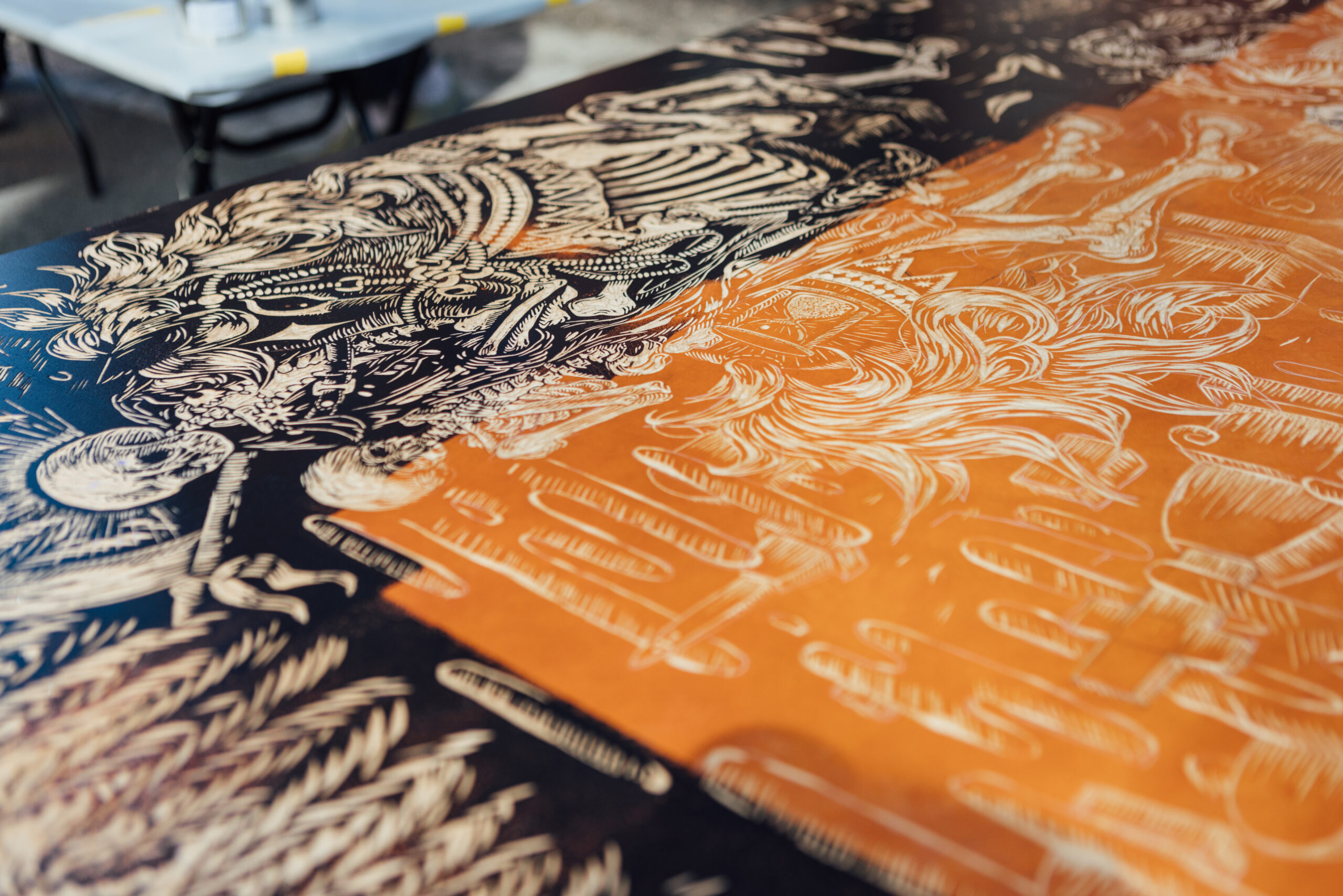
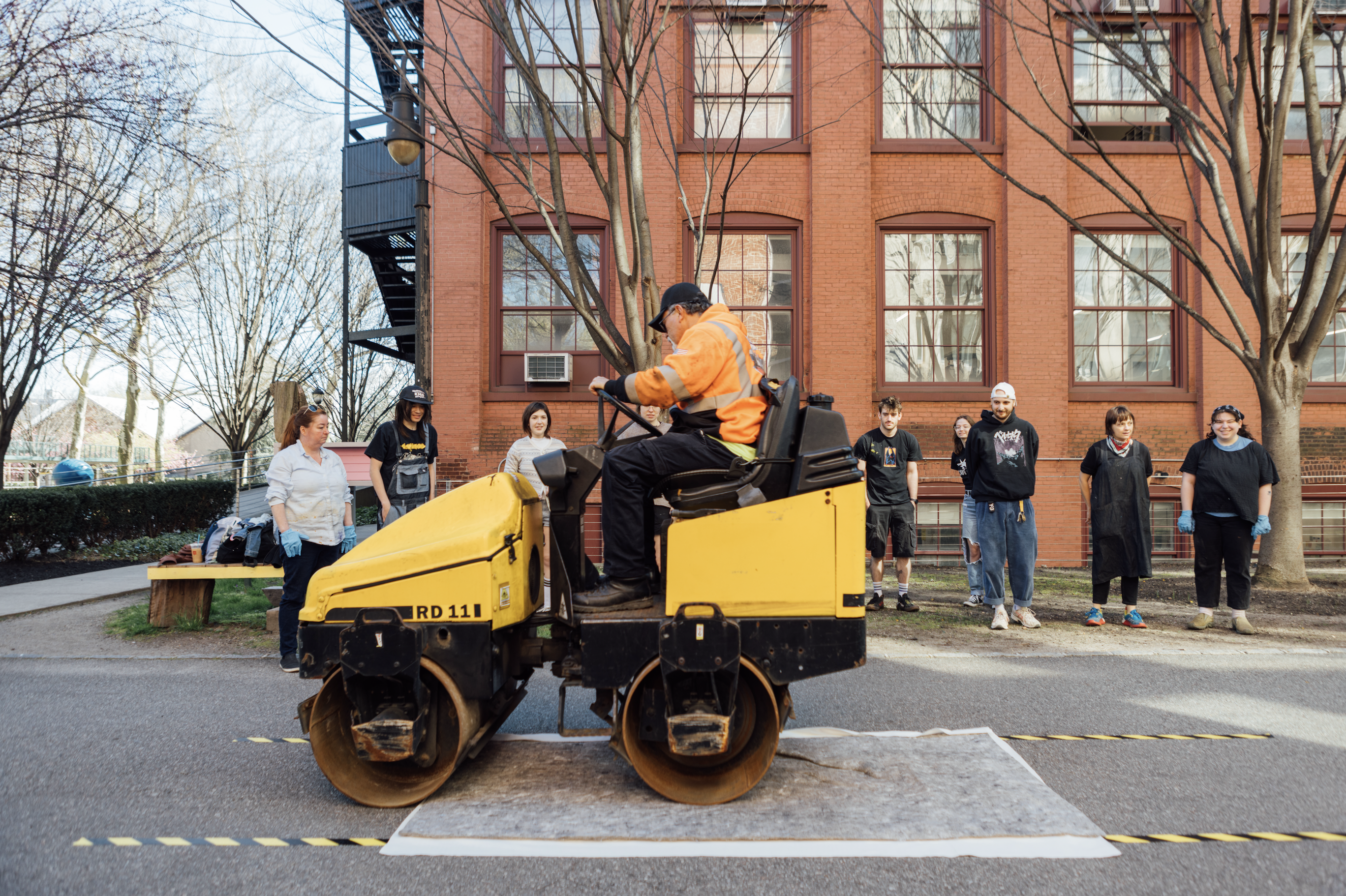
All of this preparation culminated on April 16, when the steamroller came to campus, and everyone worked together to see their woodblocks produce prints. Throughout the process, the sense of community shared among printmakers became, in Mazzora’s words, “all inky hands on deck.”
By the end, students laid out all of their prints side by side across the Brooklyn campus’s lawns along Grand Walk, for students and faculty across campus to see. “They’re working in a public space,” says Mazzora, “I think that gives them a sense of how boundlessly unlimited their work can be.”![]()
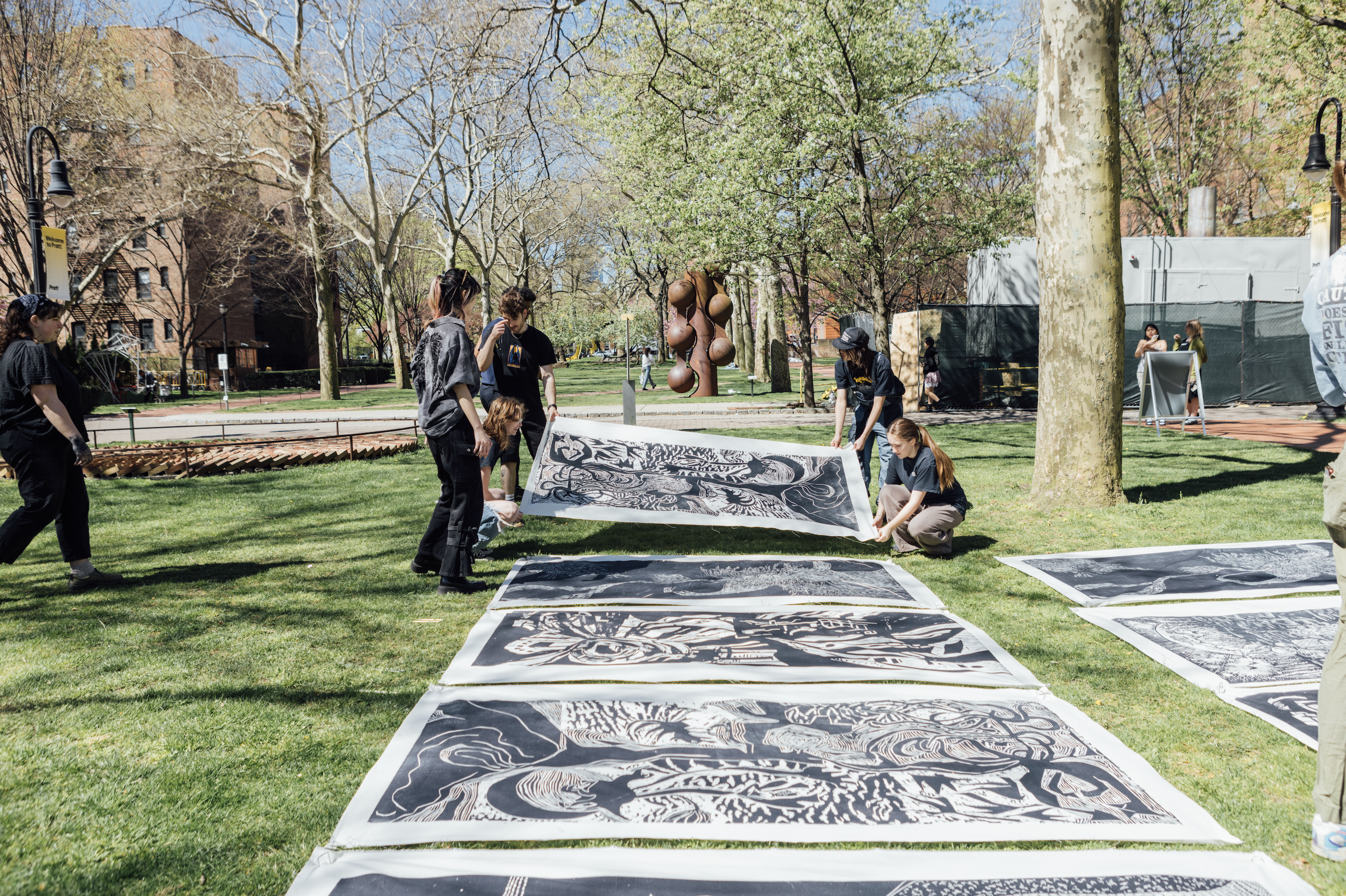
Video by Max Berger. Photos by Dahlia Dandashi.
Related Reading
Inside the Studio with WPIR Pratt Radio
Pratt’s student-run station brings together radio lovers of all kinds.
An Unlikely On-Campus Oasis
For over 20 years, Pratt Reef has offered a space of tranquility and connection on the Brooklyn campus.